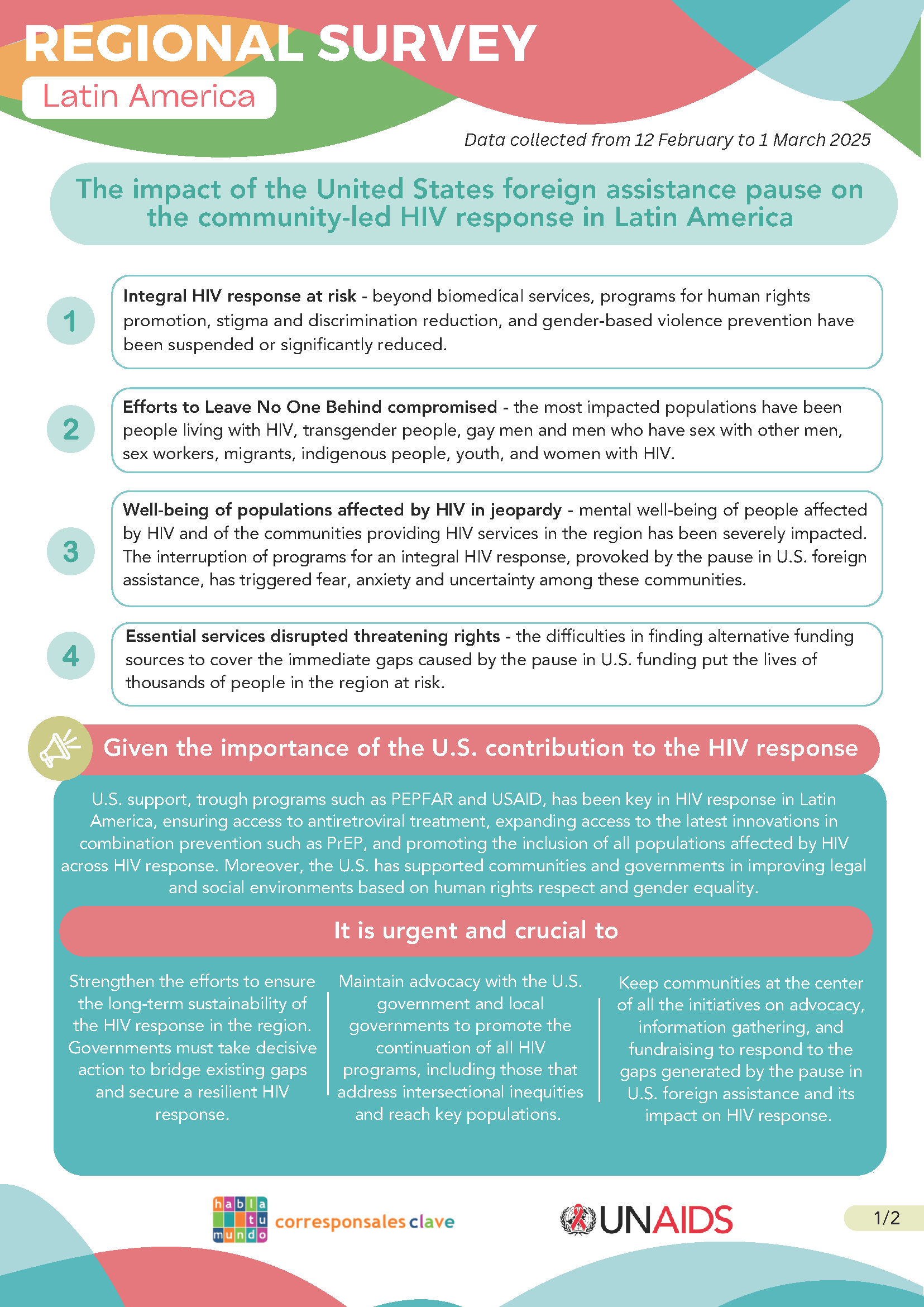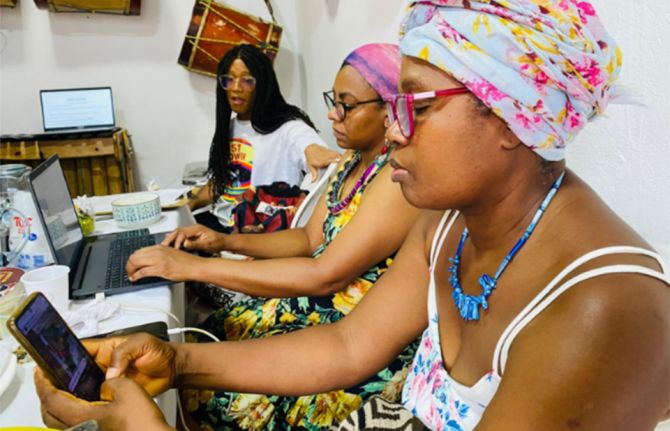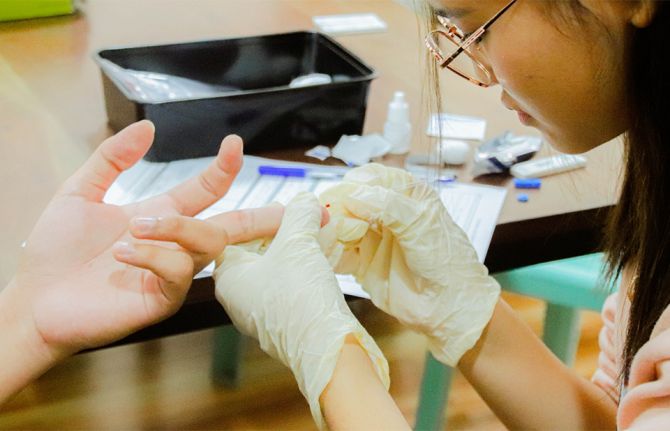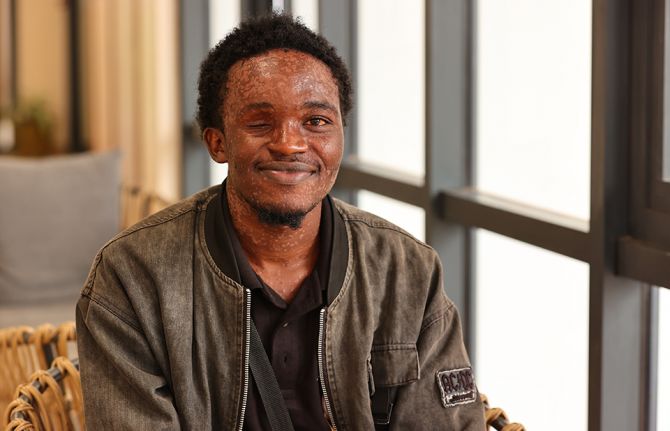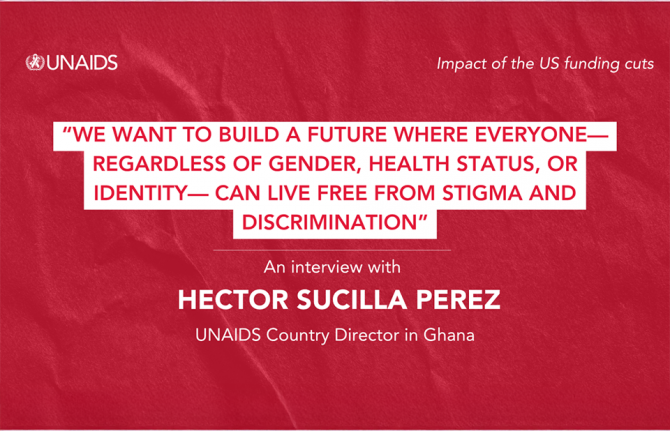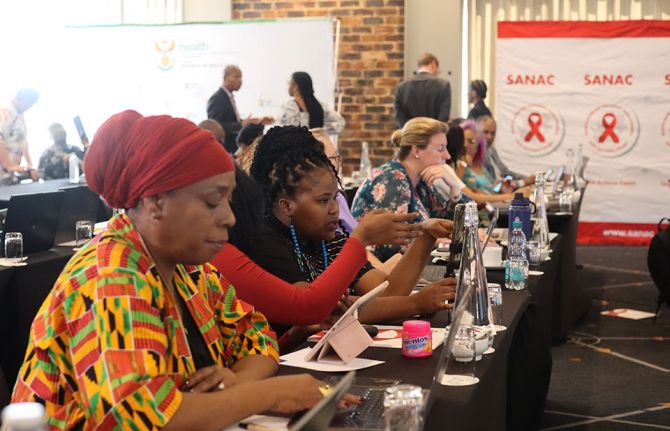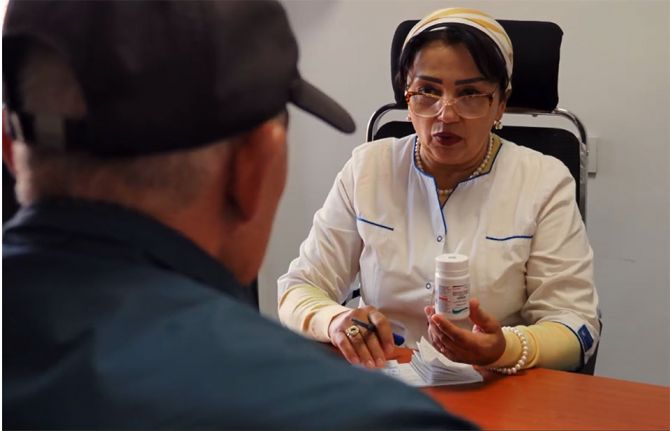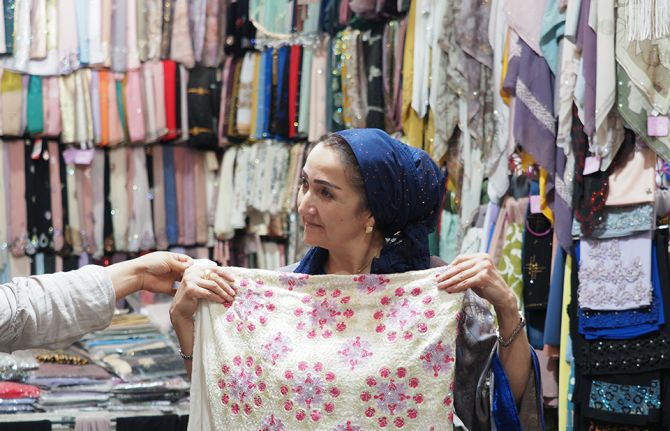
Feature Story
The impact of the United States foreign assistance pause on the community-led HIV response in Latin America
03 March 2025
03 March 2025 03 March 2025

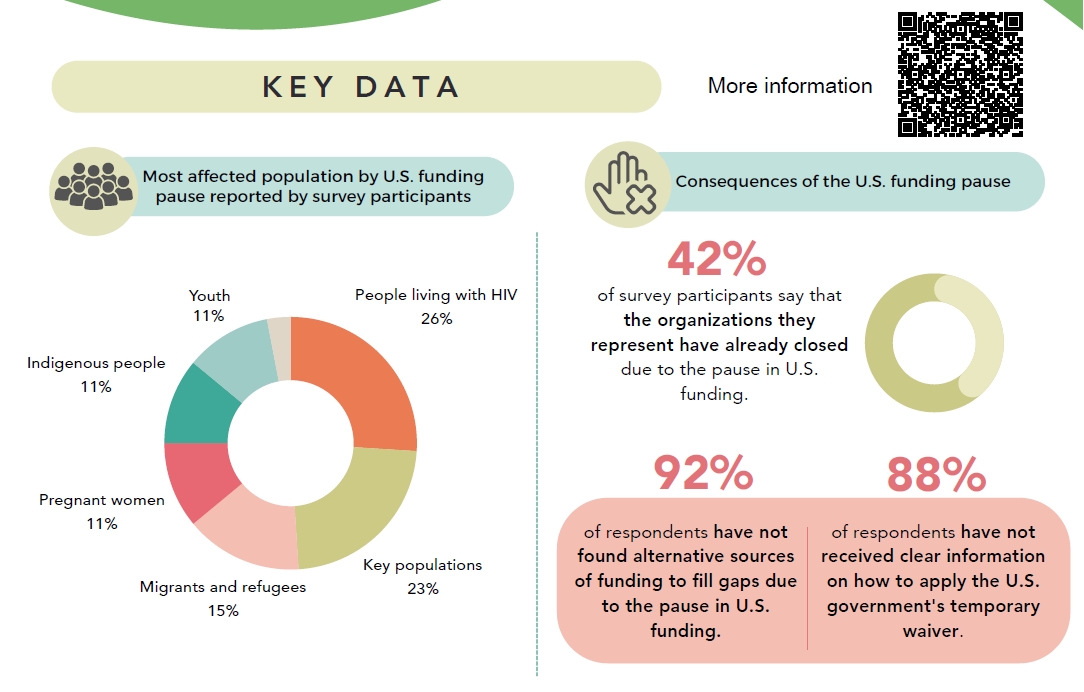


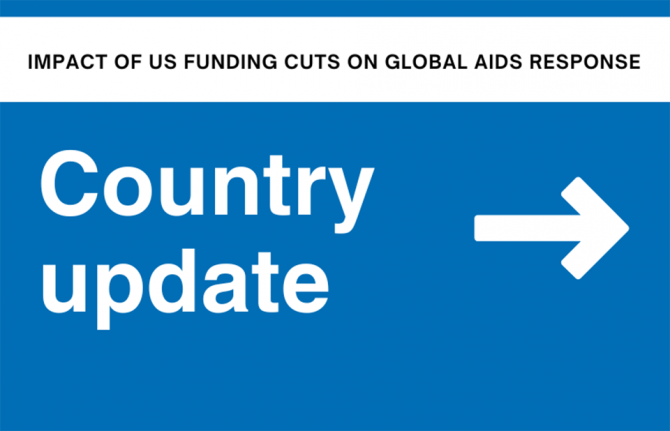
Feature Story
Impact of US funding freeze on HIV programmes in Peru
11 March 2025
11 March 2025 11 March 2025Immediate Risks and Disruptions
The US decision to freeze all funding for foreign assistance has impacted HIV prevention services in several countries in Latin America, including Peru. This has led to significant disruptions in HIV treatment and PrEP programmes for groups of migrants with HIV and migrant key populations. It also reduced community-led HIV prevention efforts, and decreased treatment adherence, counseling, and social support activities for migrants with HIV or at risk. Consequently, in a country that already has an increasing number of new HIV infections, there are increased risks of more new HIV infections, higher mortality rates, and a deterioration in the quality of care for migrants living with HIV.
Current Situation:
- ICAP: This NGO, serving 2,300 migrants with HIV, has resumed antiretroviral therapy (ART) activities after receiving a letter two weeks ago. However, community-based services supporting recruitment and adherence have not resumed and are seeking alternative funding sources.
- IMPACVIH: This community-based organization (CBO) was negotiating US Government grants for Indigenous people living with HIV before the funding freeze. They are now seeking new donors.
- Community-led and peer-led facilities: These have been most impacted, with reduced ability to participate in policy discussions and collect/report data.
Disruptions:
- Distribution of condoms and other prevention commodities: There is sufficient stock for 6-12 months, but access to PrEP services for adolescent girls and young women (AGYW), sex workers, men who have sex with men (MSM), and transgender (TG) people has been disrupted.
- Reduced HIV prevention capacity: Availability of counseling and testing for sex workers, MSM, people who inject drugs (PWID), TG people, and prisoners has been affected.
- Migrants with HIV: Migrant key populations are the most affected.
Region/country
Related


Feature Story
Impact of US funding freeze on HIV programmes in Liberia
10 March 2025
10 March 2025 10 March 2025Government Commitment & Advocacy
- President Joseph Nyumah Boakai reaffirmed his administration's commitment to supporting people living with HIV, emphasizing the importance of implementing the Safeguard Policy Exit Roadmap recommendations to the Global Fund by December 2024 to regain confidence and support and pledged timely and necessary assistance to combat HIV.
Impact of Foreign Aid Withdrawal & Mitigation Efforts
- The Ministry of Finance and Development Planning (MFDP) assessed the impact of foreign aid withdrawal and is working on an impact mitigation plan, including prioritization strategies.
- The Ministry of Health (MOH) allocated $300,000 for commodity distribution to minimize disruptions after support from the World Food Programme was suspended. MOH utilized its own resources to prevent service interruptions, assigning staff under its payroll for HIV services to ensure integration and sustainability.
Documented Impact on Services
- FHI360 (USAID-funded): Experienced a suspension but later received a waiver, allowing 26 facilities across four counties to resume case finding, PrEP for key pregnant and breastfeeding mothers, prevention, and referral services. However, prevention services for key populations remain excluded from the waiver.
- JHIEPGO & Global Fund-Supported KP Programmes: Community PrEP and above-site support, previously suspended, resumed two weeks ago. Human rights, key and vulnerable populations US-funded (FHI) key populations programmes remain ceased, with seven implementing partners canceled, causing significant gaps in HIV prevention services and case finding for key populations.
LGBTIQ+ Context & Rising Tensions
- The introduction of an anti-LGBTIQ+ bill on July 17, 2024, proposing life imprisonment for homosexuality, has created an environment in which it is difficult to deliver HIV testing, prevention and treatment services. The bill, sponsored by Hon. Johnson S. N. Williams, has fueled public hostility and increased risks for LGBTIQ+ individuals.
- A crisis within the Liberia Annual Conference of the United Methodist Church has further exacerbated anti-LGBTIQ+ sentiments. LGBTIQ+ communities have been sharing PrEP amongst themselves as they await the resumption of services.
Region/country
Related


Feature Story
Impact of US funding freeze on HIV programmes in Botswana
10 March 2025
10 March 2025 10 March 2025Immediate Risks and Disruptions
- Termination of CSO Funding: Civil Society Organizations (CSOs) received termination letters on 27 February, leading to significant disruptions in HIV services.
- Service Disruptions: The closure of drop-in centers for key populations has disrupted HIV testing, treatment, care, and support services. There are challenges in referring clients to government facilities, as service providers are no longer working, and there has been no proper handover of client files.
- Confusion Among Clients: The lack of reliable information and guidance has led to confusion and reluctance among clients to access services at other health facilities.
Politically Relevant Updates
- Government Response: The Ministry of Health has assured clients of continued access to ART services and encouraged CSOs to refer clients to government facilities. A task team, including the Ministry of Health, NAHPA, CSOs, and UN agencies (represented by UNAIDS), has been established to monitor the impact of the stop work order.
- EU Budget Cuts: While the EU ambassador confirmed drastic budget cuts in development financing, they pledged to fulfill their HIV commitments up to 2027. However, these funds will not bridge the gap left by the US Governement funding cuts.
Community Impacts
- Civil Society Resilience: Despite the challenges, CSOs have shown resilience by conducting rapid surveys to assess the impact of the stop work order. They are part of a multi-stakeholder task team and are actively participating in platforms facilitated by UNAIDS to discuss implications and share updates.
- UN Support: UNAIDS has been proactive in convening meetings with CSOs and facilitating discussions on the way forward. The UN country team and JUTA have been collectively discussing the implications, although there is still limited information on the next steps.
Region/country
Related

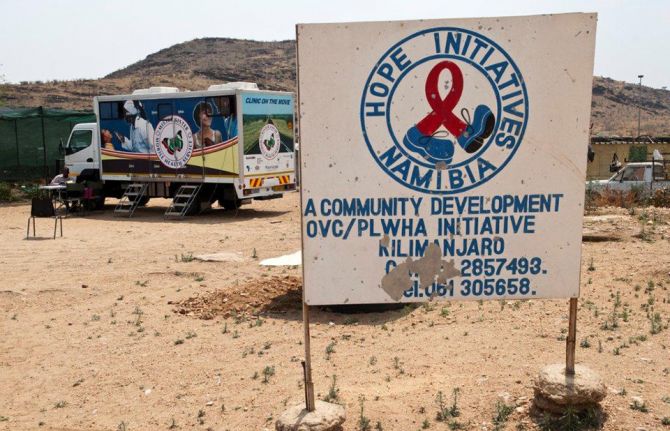
Feature Story
The impact of the US funding freeze and cuts on Namibia’s civil society: A struggle for survival
10 March 2025
10 March 2025 10 March 2025A long-standing partnership threatened
For years, Namibia’s HIV response has been supported by US funding, particularly through the United States President's Emergency Plan for AIDS Relief (PEPFAR). These programmes have provided lifesaving drugs for HIV treatment, prevention services, and essential socio-economic empowerment initiatives, especially for adolescent girls and young women and the most marginalized and at-risk groups.
However, given the recent decisions by the US to freeze and cut foreign assistance, Namibians are struggling to fill the funding gaps. An emergency humanitarian waiver issued by the US Government allowed for funding to flow to some projects and organisations (government and non-governmental) – but as the funds were not transferred into their accounts, they are faced with serious cash-flow challenges and were at risk of contravening the labour laws of the country.
The US funding freeze has had a particularly devastating impact on community groups supporting the most vulnerable populations. In Katutura, for example, adolescent mothers who were benefiting from HIV prevention and socio-economic empowerment programmes saw their support vanish overnight. “For the past year, these adolescent girls and young mothers have received psychosocial support, life-skills education and socioeconomic empowerment, but all these abruptly stopped, and their livelihoods are at risk,” said a representative of Lidar Community Foundation, a youth empowerment programme for orphaned and vulnerable girls in Katutra-Central, Windhoek. The loss of these critical services jeopardizes not only health outcomes but the livelihoods of some of Namibia’s most marginalized individuals.
A fragile civil society left to cope
Namibia’s civil society had long been reliant on external funding, with the US and the Global Fund being major contributors of the civil society-led HIV programmes. The US funding freeze has left civil society organizations working on HIV prevention, human rights and youth empowerment issues in a precarious position, unable to provide essential services and continue operations, forcing them to lay off their staff, scale back their operations, or even completely close their programmes.
This situation is overwhelmingly affecting the most vulnerable and marginalized groups in Namibian society. Key populations—such as transgender people, sex workers, and people living with HIV—were already facing discrimination in accessing essential services. With the end of the US support, these groups are now at an even greater disadvantage. “This is such an emotional time,” said Kholi Buthelezi of the Sisonke National Sex Workers Movement in South Africa. “It triggers memories from that pre-ART times in the HIV era, when all we had was hope but no concrete resources to act on the challenges."
Young women, particularly adolescent girls, are another demographic severely affected by the US funding freeze. Many had been participating in HIV prevention programmes or socio-economic initiatives aimed at empowering them. These cuts have halted progress, leaving them more vulnerable to HIV and other socio-economic challenges.
The need for collective action
A meeting co-hosted by UNAIDS on 7 February to review the implications and impact of the U.S. funding freeze, highlighted the need for collective action to help Namibia’s civil society weather this storm. Many civil society organizations were left unsure of how to engage at the national and international levels to advocate for their cause due to a lack of clear communication and support from the Namibian government. “We wonder if civil society organizations will be consulted on how the country is going to respond to this funding challenge, so that we also contribute to the solutions,” said one participant, highlighting the need for civil society to be closely involved in the response to this unprecedented challenge.
Exploring alternative funding sources, including from the private sector and other partners, was deemed essential. All partners called for a united front, with CSOs coming together not only to advocate for the reversal of the Executive Orders but also to explore ways to ensure continued support for Namibia’s most vulnerable populations.
As a way forward, CSOs were urged to complete a rapid assessment tool to better understand the immediate effects of the funding cuts, as data collection and monitoring are crucial in advocating for the continued support of affected communities and developing detailed action plans and strategies.
Strengthening partnerships, supporting mental health and psychosocial well-being, and engaging with the government are also key to ensuring that Namibia’s civil society could survive in these uncertain times.
Despite all, Namibia’s civil society remains determined. While the challenges are significant, the collective power of advocacy, solidarity, and collaboration offers a glimmer of hope for the future. It is through these unified efforts that Namibia’s most vulnerable communities may continue to receive the care, support, and recognition they deserve.
Region/country
Related


Feature Story
Impact of US funding freeze on HIV response in South Africa
07 March 2025
07 March 2025 07 March 2025- Funding Termination: On 26 February, about 40 USAID-funded health projects in South Africa received termination letters, leading to the cancellation of these projects. This has resulted in the cessation of services provided by approximately 8,493 PEPFAR-funded staff who were involved in HIV response activities.
- Service Disruptions: The halt in funding has led to the closure of many clinics and a significant reduction in services such as HIV testing, care, and treatment. Key populations, including adolescent girls, young women, and pregnant women, are at risk of losing access to critical HIV prevention tools like PrEP. There are also disruptions in data management, mobile clinics, and drop-in centers.
- Healthcare Gaps: The funding cuts will affect specific healthcare services, including limited support for advanced HIV disease services, reduced HIV testing, diminished treatment literacy, and increased stigma and discrimination for key populations.
- National Campaign: On February 25, the South African Ministry of Health, in collaboration with the South Africa National AIDS Council (SANAC), UNAIDS, WHO, and other stakeholders, launched a national campaign to close the 1.1 million HIV treatment gap by December 2025. This campaign aims to significantly increase the uptake of life-saving HIV treatment and includes a call to action for South African men to access healthcare services
- Private Sector Involvement: UNAIDS has called on the private sector to help address the funding gap resulting from the US funding freeze. During the Close the 1.1m campaign launch, the UNAIDS Regional Director for Eastern and Southern Africa, Anne Githuku-Shongwe, called on the private sector in South Africa to help bridge the 17% funding gap resulting from the US funding freeze and proposed the creation of a South African Solidarity Fund against HIV, similar to the one set up during the COVID-19 response. Currently, the private sector contributes about 2% towards the HIV response. “If the sector were to add 10% more funding, it would make a big difference,” said Ms Githuku-Shongwe.
Region/country


Feature Story
Impact of US funding freeze on HIV programmes in Namibia
06 March 2025
06 March 2025 06 March 2025Immediate Risks and Disruptions
- The freeze has exacerbated chronic supply chain challenges, leading to more prominent condom stock-outs.
- Staff Terminations: Some US Government implementing partners have issued termination letters to staff due to cash flow challenges caused by the funding freeze.
- Service Disruptions: HIV prevention programs, especially those targeting key populations, have been disrupted.
- Compromised Surveillance: Data collection continues but with compromised quality control and collation.
Politically Relevant Updates
- Government Response: A formal statement has not been issued. There is no country-level task team to discuss the impact of the US funding freeze.
- Regional AIDS Coordinating Committees (RACOC): These multisectoral committees - comprising community service organizations (CSOs), government ministries, local authorities, and regional leaders from all 14 regions of the country - held a seminar to discuss the decentralized HIV response. Suggested resolutions included enhancing HIV prevention and operationalizing the sustainability roadmap through social contracting and other modalities.
- Given the latest decisions made by the US Government, the Ministry of Health and Social Services has called an urgent meeting of the Sustainability Planning Steering Committee and stakeholders for Friday 07 March 2025, to discuss the operationalization of the Namibia Sustainability Roadmap for HIV, TB, Malaria and Viral Hepatitis.
Civil Society Impact and Response
- Cash Flow Issues for Community Partners: Despite the US Government’s waiver allowing some lifesaving services to be continued during the freeze, funds for these activities have not been transferred to implementing partners, leading to staff terminations due to cash flow issues.
- Hybrid Meeting: A meeting between CSOs, the Ministry of Health and Social Services (MoHSS), and UNAIDS discussed the implications of the recent freeze of US funding. Participants called for increased networking and collaboration among community leaders and agreed on actionable steps to mitigate adverse effects.
- Namibian Sex Workers Alliance (NAMSWA): The Namibian Sex Workers Alliance convened the African Sex Workers' Alliance (ASWA) to discuss the impact of the reinstatement of the US’ Protecting Life in Global Health Assistance Policy and the implications of the funding freeze.
Region/country
Related


Feature Story
Update on impact of US funding shifts on HIV programmes in Ukraine
06 March 2025
06 March 2025 06 March 2025As of February 2025, the HIV programmes in Ukraine are facing several challenges and risks:
Potential Stockouts of Antiretroviral Therapy (ART): There are 118,444 Ukrainian people living with HIV (PLHIV) in government-controlled areas receiving ART, with 93,893 (79%) on a TLD (tenofovir disoproxil, lamivudine and dolutegravir)-based regimen. The current TLD stock covers 5.2 months, varying by region. The 28 February Procurement and Supply Management (PSM) working group meeting, hosted by Public Health Centre, highlighted risks to TLD stocks; stockouts pose a direct threat to the continuity of HIV treatment program. The delivery of TLD drugs in the amount of 168,397 packs (15,155,730 tablets), purchased with PEPFAR project funds under COP 23, is on its way from India to Poland. However, there is a potential issue regarding the route from Poland to Ukraine.
Logistics Issues for Delivery of ART: A PEPFAR-funded batch of TLD was manufactured and handed over to the freight forwarder, Logenics, before the U.S. government suspended aid programs. The shipment is en route to Poland, but Logenics has not received confirmation from Chemonics regarding coverage of logistics costs from Poland to Ukraine. Civil society organization 100% Life is negotiating with a donor to fund transport from the Polish border.
- Pre-exposure Prophylaxis (PrEP): The stock for TDF/FTC for PrEP is sufficient for at least six months, but this also varies by region (2–10+ months). PrEP expansion remains severely constrained. The CAB-LA PrEP pilot remains unchanged. Available stock will sustain the pilot until April 2026, but there are no plans for expansion.
- Funding Gaps: There is a funding gap of USD 1.9 million for procuring 30,000 three-month ART courses needed to sustain treatment through 2025. Ukraine’s Public Health Centre may request a state budget reallocation to close the USD 1.9 million funding gap for ART procurement, though prospects remain uncertain.
Despite ongoing challenges, Ukraine remains committed to the HIV response, supported by a strong coalition including members of Ukraine’s government, civil society, international organizations and donors. UNAIDS, including its Co-sponsors, other UN agencies and UN Member States continue working together to ensure essential services for people living with, and at risk for HIV, including women and key populations.
Region/country
Related
 Women, HIV, and war: a triple burden
Women, HIV, and war: a triple burden

12 September 2025
 Displacement and HIV: doubly vulnerable in Ukraine
Displacement and HIV: doubly vulnerable in Ukraine

11 August 2025


Feature Story
Status of HIV programmes in Tajikistan
05 March 2025
05 March 2025 05 March 2025In Tajikistan, 61% of the national HIV program is funded by external sources. The US Government funding amounts to approximately 20% and is the second largest contribution after Global Fund to fight AIDS, Tuberculosis and Malaria, which represent around 40% of the total resources. Contributions from other donors are negligible.
The US Government is a key partner in developing national HIV programs and strategies including writing country proposals to the Global Fund, strengthening laboratory services, introducing and informing the population about best practices in HIV prevention, integrating HIV with other services, and collecting and providing statistical data for decision-making. In addition, funding from the US Government is key to the functioning and survival of civil society organizations, communities of people living with HIV, and representatives of key populations in the country.
The suspension of USAID funding has had a profound impact on civil society organizations (CSOs) that provide essential HIV services. This has led to:
- Fragmentation of the HIV response: Vulnerable populations are at greater risk of exclusion and neglect without these services.
- Loss of outreach services: Hard-to-reach populations have limited access to HIV prevention, testing, and treatment.
- Impact on adherence support: People living with HIV (PLHIV) are struggling to maintain antiretroviral therapy (ART) regimens, leading to increased viral loads and poorer health outcomes.
- Suspension of peer support programs: PLHIV are deprived of critical emotional and practical support, which is particularly important in a context of prevalent stigma and discrimination.
- Civil society impact, resilience and response: The suspension of USAID funding has led to a decline in community involvement, which will reduce PLHIV representation in policy and programming, making interventions less responsive to their needs. The loss of participation in regional networks will disconnect Tajikistan's HIV response from global and regional best practices, reducing opportunities for knowledge sharing, capacity building, and resource mobilization.

